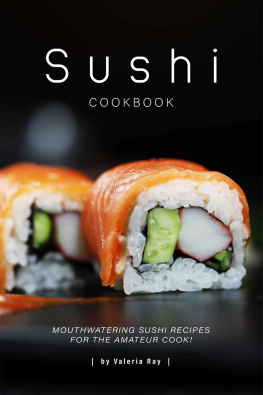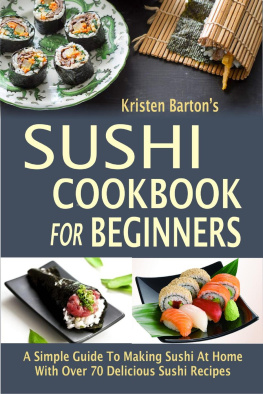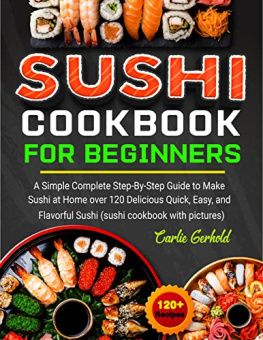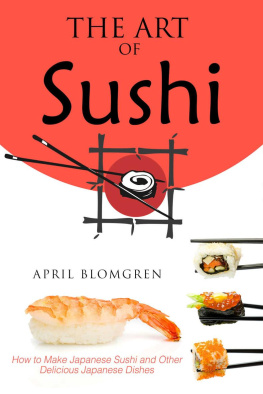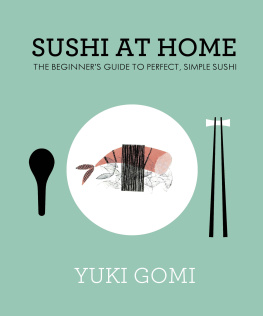About Tuttle
Books to Span the East and West
Our core mission at Tuttle Publishing is to create books which bring people together one page at a time. Tuttle was founded in 1832 in the small New England town of Rutland, Vermont (USA). Our fundamental values remain as strong today as they were thento publish best-in-class books informing the English-speaking world about the countries and peoples of Asia. The world has become a smaller place today and Asias economic, cultural and political influence has expanded, yet the need for meaningful dialogue and information about this diverse region has never been greater. Since 1948, Tuttle has been a leader in publishing books on the cultures, arts, cuisines, languages and literatures of Asia. Our authors and photographers have won numerous awards and Tuttle has published thousands of books on subjects ranging from martial arts to paper crafts. We welcome you to explore the wealth of information available on Asia at www.tuttlepublishing.com.
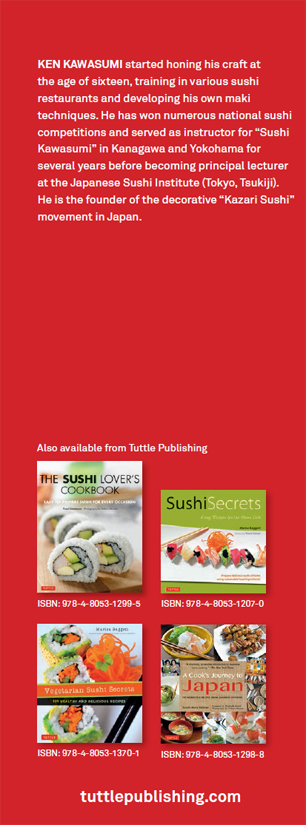
CHAPTER 1
Basic Sushi Rolls and Simple Shapes
The hosomaki thin roll is the basis for most of the rolls in this book. Master this roll first before proceeding to more complicated rolls. Layered rolls incorporate traditional sushi rolling techniques and produce beautiful designs that are as captivating to the modern eye as they were in times past. Carefully follow each step for best results.
Basic Thin Rolls
Round Rolls
Square Rolls
Triangle Rolls
Raindrop Rolls
Jewel Rolls
Thin Roll Arrangements
Flower Rolls
Cherry-Blossom Rolls
Layered Rolls Made with Thin Rolls
Seven Treasure Rolls
Peach-Blossom Rolls
Plum-Blossom Rolls
Layered Rolls Made with Cut Thin Rolls
Coin Rolls
Seven-Part Star Rolls
Four Seas Rolls
Water Chrysanthemum Rolls
Basic Thin Rolls (Hosomaki)
The thin roll is important to master, as it is the basic foundation of most varieties of Kazari Sushi. Its important to keep in mind the uniformity of the shape of the roll, the centering of the filling, and the density of the ricethat is, gently compressed without being crushed. You can easily apply the techniques to variations, including round, square, and triangle-shaped rolls.
Round Rolls with Kanpyo Simmered Gourd M aru-maki
Kanpyo Simmered Gourd is used in many Kazari Rolls, especially those featuring curved lines, like kanji character rolls. Its tasty and versatile, and stands on its own while also partnering well with other ingredients. This simple thin roll is a mainstay in sushi restaurants, and is a great vegetarian sushi option as well.
MAKES 24 ROUND PIECES
1 cups (350 g) prepared sushi rice
2 sheets nori, cut in half lengthwise to make 4 half-sheets
4 strips of Kanpyo Simmered Gourd (see page ), cut to the length of the nori (7 in / 19 cm), approximately 3 oz (90 g)


Place a half-sheet of nori horizontally on a sushi mat. Without crushing the rice grains, gently spread a fourth (about 7 tablespoons) of the sushi rice across the nori, leaving about inch (2 cm) of space at the back edge of the nori and an even narrower space at the front. Use your finger to make a shallow lengthwise channel across the center of the rice, where the filling will be placed. Lay one-fourth of the kanpyo strips across the rice in this depression.

Making sure not to shift the nori, lift up the front of the sushi mat and curl the front edge of the mat toward the back in one smooth motion.
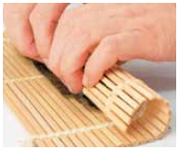
Tighten the sushi mat around the nori and filling. Pull the mat toward you, continuing to roll the mat so that the empty nori at the far end of the sheet closes the roll. Use the mat to adjust the shape, forming a cylinder of even thickness. Remove the sushi mat. Repeat to make 4 rolls in all.
Use a very sharp knife dipped in vinegar water to cut each roll in half, then cut each half into thirds to make 6 pieces, wiping the blade clean after each cut.
Square Rolls with Tuna Kaku-maki
Tekka-maki , or tuna roll, is one of the two most popular thin rolls (the other is kappa-maki , cucumber rollin fact, if you like, you can use a thin-skinned Japanese or English cucumber in place of tuna in this recipe). Cut the four sides of the tuna very straight to make even-sided bars with a square cross-section. This will help make the square shape of the roll clearer.
MAKES 24 SQUARE PIECES
1 cups (350 g) prepared sushi rice
2 sheets nori, cut in half lengthwise to make 4 half-sheets
4 rectangular bars of sushi-grade tuna (around 2 oz / 60 g each), cut to 7 x 3 8 x in (19 x 1 x 1 cm)
2 teaspoons prepared wasabi paste
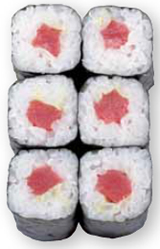

Place one half-sheet of nori horizontally on a sushi mat. Without crushing the rice grains, gently spread one-fourth (about 7 tablespoons) of the sushi rice across the nori, leaving about inch (2 cm) of space at the back edge of the nori and a narrower space at the front. Use your finger to make a shallow lengthwise channel across the center of the rice, where the filling will be placed.
Gently smear teaspoon of the wasabi across the rice along the central channel. Lay the tuna on top of the wasabi.

As when making a round roll, lift up the front of the sushi mat and curl it toward the back in one smooth motion, making sure not to shift the nori and filling as you do so. Then place your index fingers on the center of the sushi mat to create a flat side that is parallel to one side of the square filling, pressing down gently. Repeat for the other three sides so that the roll is clearly square. Remove the sushi mat. Repeat to make 4 rolls in all.
Use a very sharp knife dipped in vinegar water to cut each roll in half, then cut each half into thirds to make 6 pieces, wiping the blade clean each time.
NOTE: The amount of wasabi used can be varied according to your tastes or your guests desires. Many sushi restaurants in the US, knowing that their customers will mix wasabi together with soy sauce for dipping, do not put wasabi into their rolled sushi. Traditionally, however, the wasabi is incorporated into the roll, so pieces of rolled sushi are gently dipped into plain soy sauce. Only when eating sashimi (raw fish served without rice) do customers add their own wasabi to taste.
Triangle Rolls Sankaku-maki
If youd like more variety in this simple roll, you can sprinkle toasted sesame seeds over the cucumber, or add a smear of wasabi or umeboshi paste. When rolling the sushi, try to be sure the triangle of the cucumber wedge is aligned with the triangle shape of the roll.
Next page

